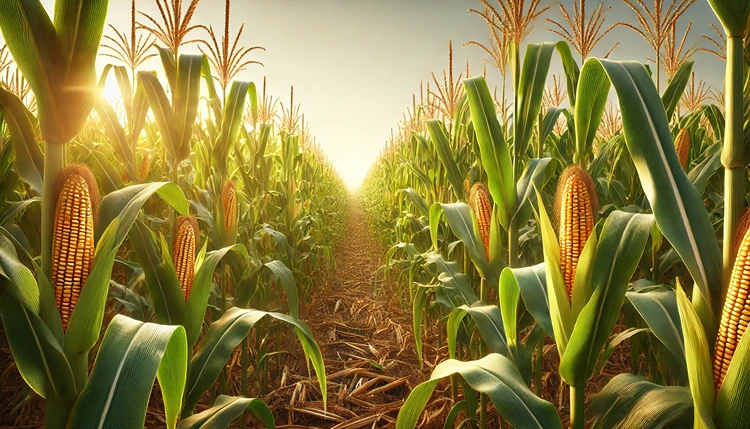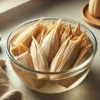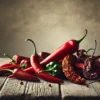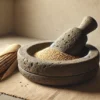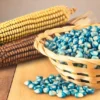When we think about traditional Mexican cuisine, corn is one of the first ingredients that comes to mind. But corn wasn’t just a key ingredient for the Aztecs; it was the foundation of their diet and culture. The history of corn in Aztec cooking traditions goes beyond its use in everyday meals. It was a symbol of life itself, deeply connected to religious beliefs and social practices. So, how did corn become so essential to the Aztecs, and how did it shape their culinary traditions?
In this article, we’ll explore the role of corn in Aztec society, how it was cultivated, and the variety of ways it was prepared in their cuisine. Corn wasn’t just a food; it was a way of life, woven into the fabric of Aztec daily rituals and celebrations. By the end, you’ll see how this ancient grain continues to influence Mexican cooking today.
How Important Was Corn in Aztec Culture?
To the Aztecs, corn was more than just sustenance—it was sacred. Corn, or maize as they called it, was believed to be a gift from the gods. In their mythology, it was considered a divine crop, essential for the survival of their people. The god of maize, Centeotl, was worshipped to ensure a bountiful harvest, and offerings were made to guarantee the crop’s growth.
Not only was corn central to their religious practices, but it was also a vital part of their economy. Corn was used as a form of currency and could be traded or offered as tribute to higher powers. Essentially, the entire Aztec society was structured around this crop.
Why Was Corn So Crucial to Aztec Daily Life?
The Aztecs developed ingenious ways to use every part of the corn plant. From food to fuel, nothing went to waste. They used corn stalks for building materials, dried leaves for crafting, and the kernels for cooking. The versatility of corn made it an indispensable resource for their civilization.
The primary reason corn was so essential in Aztec life was its nutritional value. Corn provided carbohydrates, which gave the Aztecs energy, and when combined with beans, it created a complete protein source. This made it possible for the Aztecs to thrive even in less fertile areas where other crops might not grow.
How Did the Aztecs Prepare Corn?
Corn was prepared in various ways, and each method had its own significance in Aztec cooking traditions. The most common process was nixtamalization, where corn kernels were soaked and cooked in an alkaline solution. This not only softened the kernels for grinding but also enhanced the nutritional content by making vitamins and minerals more accessible.
After nixtamalization, the corn was ground into dough, known as masa. This dough was the base for many Aztec staples, such as tortillas, tamales, and atole (a type of corn-based drink). Masa was incredibly versatile and could be flavored or combined with other ingredients to create diverse dishes.
Helpful Hint:
When making homemade tortillas, using freshly nixtamalized masa enhances both the flavor and texture. If you don’t have access to fresh masa, try using masa harina, a dried corn flour, which still retains much of the traditional taste.
What Were the Most Popular Corn Dishes in Aztec Cooking?
While corn was used in countless recipes, there were a few dishes that stood out as the cornerstones of Aztec cuisine. The humble tortilla, which has survived for centuries, was a staple in every household. Tamales, which are still popular today, were also a favorite. These corn dough packets, filled with meat or vegetables, were steamed in corn husks and served during both daily meals and special occasions.
The Aztecs also had a fondness for pozole, a hearty soup made from hominy (corn kernels treated with lime) and meat. This dish held ceremonial importance and was often prepared during religious festivals. Another popular dish was tlaxcalli, a type of flatbread made from corn dough, which was the precursor to the modern tortilla.
Did the Aztecs Use Corn in Drinks?
Corn wasn’t just for solid food; it was also the base for several beverages. Atole, mentioned earlier, was a thick drink made from masa, water, and sometimes sweetened with honey or fruit. It was a nutritious and filling beverage, often served at breakfast to provide energy for the day ahead. The Aztecs also fermented corn to make pulque, a mildly alcoholic drink used in religious rituals and social gatherings.
How Did Corn Cultivation Shape Aztec Society?
Corn farming was a communal effort in Aztec society, and it required significant knowledge of the land and weather. The Aztecs practiced a sophisticated form of agriculture called chinampas, or “floating gardens.” These man-made islands were built in shallow lakes, allowing for year-round cultivation of corn and other crops. This agricultural method was incredibly efficient and allowed the Aztecs to produce food on a massive scale, supporting their large population.
The success of corn cultivation also influenced the social structure of the Aztec empire. Farmers were highly respected, as they were responsible for feeding the people. Corn became not only a food source but also a form of tribute paid to rulers. This tribute system reinforced the importance of corn in maintaining both the physical and political health of the empire.
Helpful Hint:
Chinampas are still used today in some parts of Mexico. If you’re ever visiting, take a trip to Xochimilco, where you can see these floating gardens in action. It’s a great way to experience a piece of living history.
How Does Corn Continue to Influence Modern Mexican Cuisine?
While the Aztec empire may be long gone, the influence of corn on Mexican cuisine is still very much alive. Corn remains a dietary staple in Mexico, and many traditional recipes, like tamales, pozole, and tortillas, are enjoyed by people around the world today.
Modern Mexican cuisine continues to celebrate the versatility of corn by incorporating it into both traditional and innovative dishes. Whether it’s grilled elote (corn on the cob) at street vendors or sophisticated corn-based dishes in high-end restaurants, the legacy of corn in Aztec cooking traditions is undeniable.
What Was the Role of Corn in Aztec Religious Practices?
Corn held a deep spiritual meaning for the Aztecs. As mentioned earlier, they believed it was a divine gift, and this belief was reflected in their religious ceremonies. Corn was often offered in rituals as a way of thanking the gods for providing sustenance. The Aztecs worshipped Centeotl, the god of maize, who was considered the protector of the corn crop. Many ceremonies and festivals were dedicated to ensuring a good harvest, as the success of their corn crop was directly tied to the well-being of the society.
During these religious festivals, large amounts of corn-based foods were prepared and shared among the community. Tamales, tortillas, and drinks like atole would be served to both participants and as offerings to the gods. These events helped solidify corn’s place not only as a staple of the diet but also as a key element of spiritual life.
“Corn is not only our food; it is our life. Without it, we are nothing. With it, we are everything.” — Traditional Aztec saying.
How Was Corn Used in Religious Offerings?
One of the most important uses of corn in Aztec religious practices was in offerings to the gods. Corn was often placed on altars, and rituals would involve burning or burying maize to show gratitude and ensure a bountiful harvest. The Aztecs believed that by offering corn to the gods, they were participating in the cycle of life and death, ensuring that the balance between nature and humanity was maintained.
Did Corn Have Social Significance Among the Aztecs?
Corn was not just food for the Aztecs; it was a social equalizer. Regardless of status, everyone relied on corn, from the emperor to the common farmer. This shared dependence on maize created a sense of unity within Aztec society. During feasts and festivals, corn-based dishes were served to all, fostering a communal spirit.
However, while corn was accessible to everyone, certain corn-based dishes were reserved for the elite. For example, tzoalli, a dough made from corn and amaranth, was often molded into sacred shapes and used in high-status religious ceremonies. These special preparations highlighted corn’s versatility and importance across all levels of society.
Was Corn Used for Barter and Trade?
Corn also played a vital role in the Aztec economy. It was a form of currency in local markets, and people could trade corn for other goods. In fact, corn was so valuable that it was often used as tribute, which meant that lower-ranking groups and regions would give corn to the higher-ranking rulers as part of their loyalty and duty. This system of tribute helped the Aztec empire grow wealthy and powerful.
What Is Nixtamalization and Why Was It Important?
Nixtamalization is a process that transformed how the Aztecs consumed corn. By soaking the corn kernels in an alkaline solution, usually limewater, the Aztecs made the corn easier to grind, more nutritious, and more flavorful. This process also unlocked essential vitamins like niacin (vitamin B3), which is crucial for a balanced diet.
The nixtamalization process not only made corn more digestible but also improved the nutritional value by making certain proteins and minerals more accessible. This innovation was key in sustaining the Aztec population, as it allowed them to get the most out of their staple crop.
Helpful Hint:
When using corn in modern recipes, you can often find pre-nixtamalized masa harina, which simplifies the process. This corn flour is a great option for making tortillas, tamales, or even atole at home.
What Tools Did the Aztecs Use to Prepare Corn?
Grinding corn was a labor-intensive process, and the Aztecs relied on specialized tools to make the job easier. The most iconic tool was the metate, a stone slab used to grind nixtamalized corn into masa. This tool was typically used by women, and the process of grinding was physically demanding, but it was an essential part of daily life.
Another important tool was the comal, a flat griddle used to cook tortillas and other corn-based foods. The comal was usually made of clay and placed directly over a fire. It was used not only for tortillas but also for roasting corn kernels and other ingredients. These tools are still used in many parts of Mexico today, reflecting the enduring legacy of Aztec culinary traditions.
How Did Grinding Corn on a Metate Work?
The metate, paired with a handheld stone called the mano, was used to crush the softened corn kernels. The process required a rhythmic, back-and-forth motion to break down the corn into a smooth dough. Women would often spend hours grinding corn to make enough masa for their family’s meals. Despite the effort, it was a highly respected and necessary task, as it fed the entire household.
Key Tools Used in Aztec Corn Preparation
| Tool | Purpose | Material |
|---|---|---|
| Metate | Grinding nixtamalized corn into masa | Stone |
| Comal | Cooking tortillas and roasting ingredients | Clay |
| Cuescomate | Storing dried corn | Adobe or wood |
| Chinampas | Growing corn in floating gardens | Natural materials (soil, wood, plants) |
| Mano | Hand tool used with the metate to grind corn | Stone |
What Role Did Corn Play in Aztec Festivals?
Festivals were an integral part of Aztec life, and corn was at the center of many of these celebrations. One of the most important festivals was Toxcatl, dedicated to the god Tezcatlipoca. During this festival, a sacred corn dough called tzoalli was used to create effigies of the gods, which were later consumed in a ritualistic meal. These events were deeply symbolic, reflecting the Aztecs’ belief that corn connected the human world to the divine.
Another significant festival was the Ochpaniztli, which celebrated the goddess Tlazolteotl, the mother of maize. During this time, corn offerings were made to ensure a successful harvest, and large communal feasts took place. Corn-based foods like tamales and tortillas were prepared in vast quantities, with entire communities coming together to share the bounty.
Traditional Aztec-Style Corn Tortillas
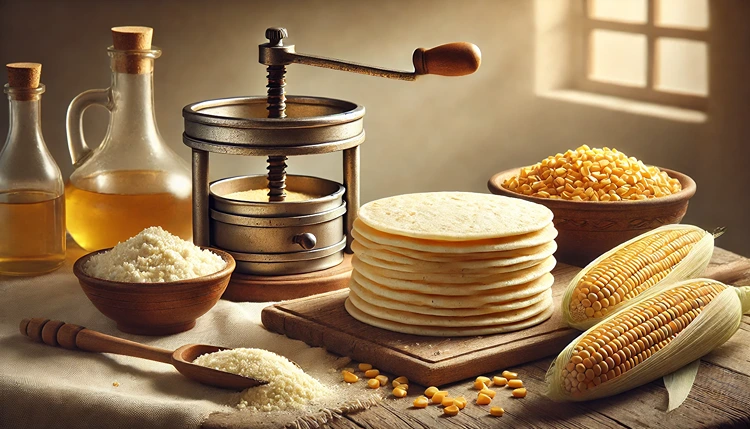
Ingredients
- 2 cups masa harina (corn flour)
- 1 ½ cups warm water
- Pinch of salt
Instructions
- In a large bowl, mix the masa harina and salt.
- Gradually add warm water, mixing until a dough forms. Knead for a few minutes until smooth.
- Divide the dough into 12 equal portions and roll them into balls.
- Place each ball between two pieces of wax paper and flatten with a tortilla press or rolling pin.
- Heat a comal or non-stick skillet over medium heat. Cook each tortilla for 1-2 minutes per side, until lightly browned.
Notes
These tortillas are best enjoyed fresh, but they can be stored in an airtight container for up to 3 days. For added flavor, toast them slightly over an open flame before serving.
FAQs
Wrapping Up
Corn was more than just food for the Aztecs—it was a vital part of their culture, religion, and economy. Its significance in their daily life is reflected in their cooking techniques, religious rituals, and communal activities. The history of corn in Aztec cooking traditions highlights its role as a cornerstone of their society, a crop that sustained the people both physically and spiritually.
As you explore the rich flavors of Mexican cuisine today, it’s clear that corn’s legacy lives on in every tortilla, tamale, and sip of atole. The Aztecs laid the foundation for many of the dishes we know and love, and understanding their connection to this ancient grain gives us a deeper appreciation for the culinary traditions that continue to thrive.
The history of corn in Aztec cooking is not only about the past; it’s a reminder of how food shapes our cultures and connects us across time. By recognizing the importance of corn in these traditions, we continue to honor the innovations and practices that have shaped Mexican cuisine for centuries.

